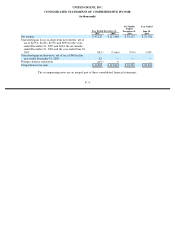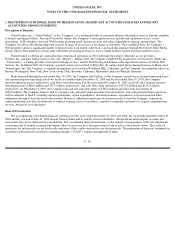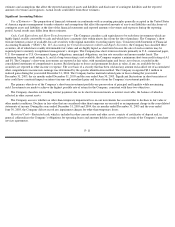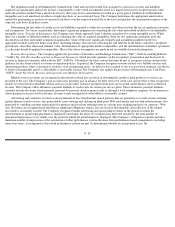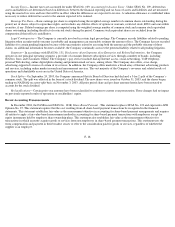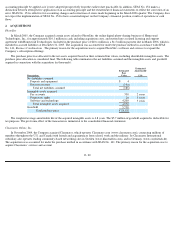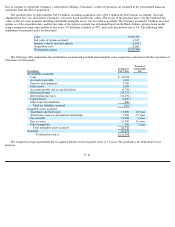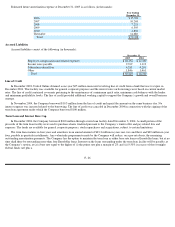Classmates.com 2005 Annual Report Download - page 85
Download and view the complete annual report
Please find page 85 of the 2005 Classmates.com annual report below. You can navigate through the pages in the report by either clicking on the pages listed below, or by using the keyword search tool below to find specific information within the annual report.
Product Development Costs— The Company capitalizes certain costs incurred for the development of software. Product development
expenses include expenses for the maintenance of existing software and the development of new or improved software and technology, including
personnel-related expenses for the software engineering department and the costs associated with operating the Company’s facility in India.
Costs incurred by the Company to manage, monitor and operate the Company’s services are generally expensed as incurred, except for certain
costs relating to the acquisition and development of internal-use software that are capitalized and depreciated over their estimated useful lives,
generally three years or less.
General and Administrative— General and administrative expenses include personnel-related expenses for executive, finance, legal, human
resources and internal customer support personnel. In addition, general and administrative expenses include fees for professional, legal,
accounting and financial services, non-income taxes, insurance, and occupancy and other overhead-related costs, as well as the expenses
incurred and credits received as a result of certain legal settlements.
Stock-Based Compensation— The Company accounts for stock-based employee compensation arrangements in accordance with the
provisions of Accounting Principles Board (“APB”) Opinion No. 25, Accounting for Stock Issued to Employees , Financial Accounting
Standards Board (“FASB”) Interpretation No. (“FIN”) 44, Accounting for Certain Transactions Involving Stock Compensation , and EITF
Issue No. 00-23, Issues Related to the Accounting for Stock Compensation under APB Opinion No. 25 and FIN No. 44 and complies with the
disclosure provisions of SFAS No. 123, Accounting for Stock-Based Compensation and SFAS No. 148, Accounting for Stock-Based
Compensation—Transition and Disclosure, an amendment of FASB Statement No. 123 . Under APB Opinion No. 25, employee stock-based
compensation expense is recognized over the vesting period based on the difference, if any, on the date of grant, between the fair value of the
Company’s stock and the exercise price. The Company accounts for stock issued to non-employees in accordance with the provisions of SFAS
No. 123 and EITF Issue No. 96
-18, Accounting for Equity Instruments That Are Issued to Other Than Employees for Acquiring, or in
Conjunction with Selling, Goods or Services . Compensation expense is recorded in accordance with FIN 28, Accounting for Stock Appreciation
Rights and Other Variable Stock Option or Award Plans, an interpretation of APB Opinions No. 15 and 25.
As required by SFAS No. 148, the following provides pro forma net income and pro forma net income per common share disclosures for
stock-based awards as if the fair-value-based method defined in SFAS No. 123 had been applied.
For each option granted up to and including September 23, 1999, the Company calculated the minimum fair value on the date of grant using
the minimum value option-pricing model as prescribed by SFAS No. 123. The fair value of the options granted subsequent to September 23,
1999 has been estimated at the date of grant using the Black-Scholes option-pricing model, using the following weighted-average assumptions:
F- 16
Year Ended
December 31,
Six Months
Ended
December 31,
Year Ended
June 30,
2005
2004
2003
2003
Risk
-
free interest rate
4
%
3
%
3
%
2
%
Expected life (in years)
5
5
5
5
Dividend yield
2
%
0
%
0
%
0
%
Volatility
92
%
103
%
107
%
110
%


